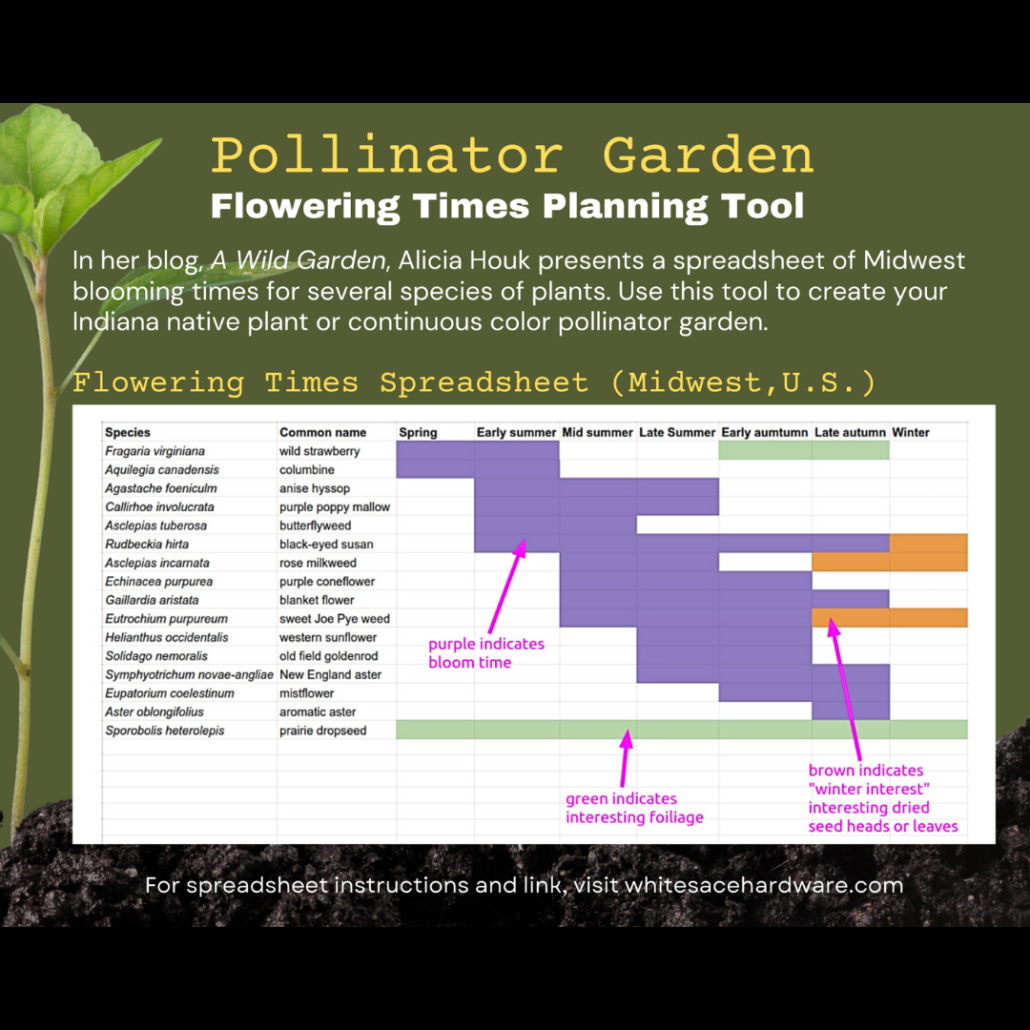Create your own Pollinator Garden
“Buzzing bees, fluttering butterflies and zipping hummingbirds are a joy to watch as they flit from flower to flower, but they do more than entertain. They actually help fuel life on this planet.
The tomatoes in your salad, the herbs in your soup, the apples in your pie — none of these would exist without the work of pollinators. These vital creatures will make your yard their home when you roll out the welcome mat with a pollinator garden.” – Elizabeth Howe, Design, trends, and lifestyles expert for White’s Ace Hardware
Long-Blooming Pollinator Garden
In planning a garden, successful gardeners aim for a long-blooming season. They want to see a variety of flowers in continuous bloom — one starting when another is fading —to enjoy an all-season multi-hued flower show! And in pollinator gardens, a primary goal is to provide food(pollen and nectar) to nourish pollinators such as bees, butterflies, and hummingbirds, from early spring to late fall.
How do gardeners — and you — do that? Start with a Seasonal Flowering Times Planning Tool!
In her blog, A Wild Garden, Alicia Houk presented this spreadsheet, or compilation, of Midwest seasonal blooming times for several species of plants. You can use this tool to create a continuous color pollinator garden.
Select the flowers you wish to plant according to their peak blooming periods, as listed in the spreadsheet, taking care to choose flowers that bloom at different times from spring to fall. The blooming periods listed are specific to the Midwest region of the US, so they are appropriate forIndiana gardeners.
[NOTE: With a little additional research you can also select plants that fall into Indiana’s USDA hardiness zones, 5b to6a. Your local garden center can be of great assistance in your planning.]
Use the tool to make a list of your desired plants, and then organize them by bloom time. Now you can create a picture of how you want your garden to look over time, which plants will peak when, and as Alicia notes, understand “how biodiverse the flowers are at any given moment, from spring through fall.” This is especially helpful in keeping pollinators continuously nourished and happy to assist in your plants’ healthy growth.
For more tips in attracting pollinators, check out our Pollinator Garden flip book above. And happy planting! 🌻
Click on photo above to download spreadsheet.
Click on photo above to learn more about planting a long-blooming pollinator garden.


